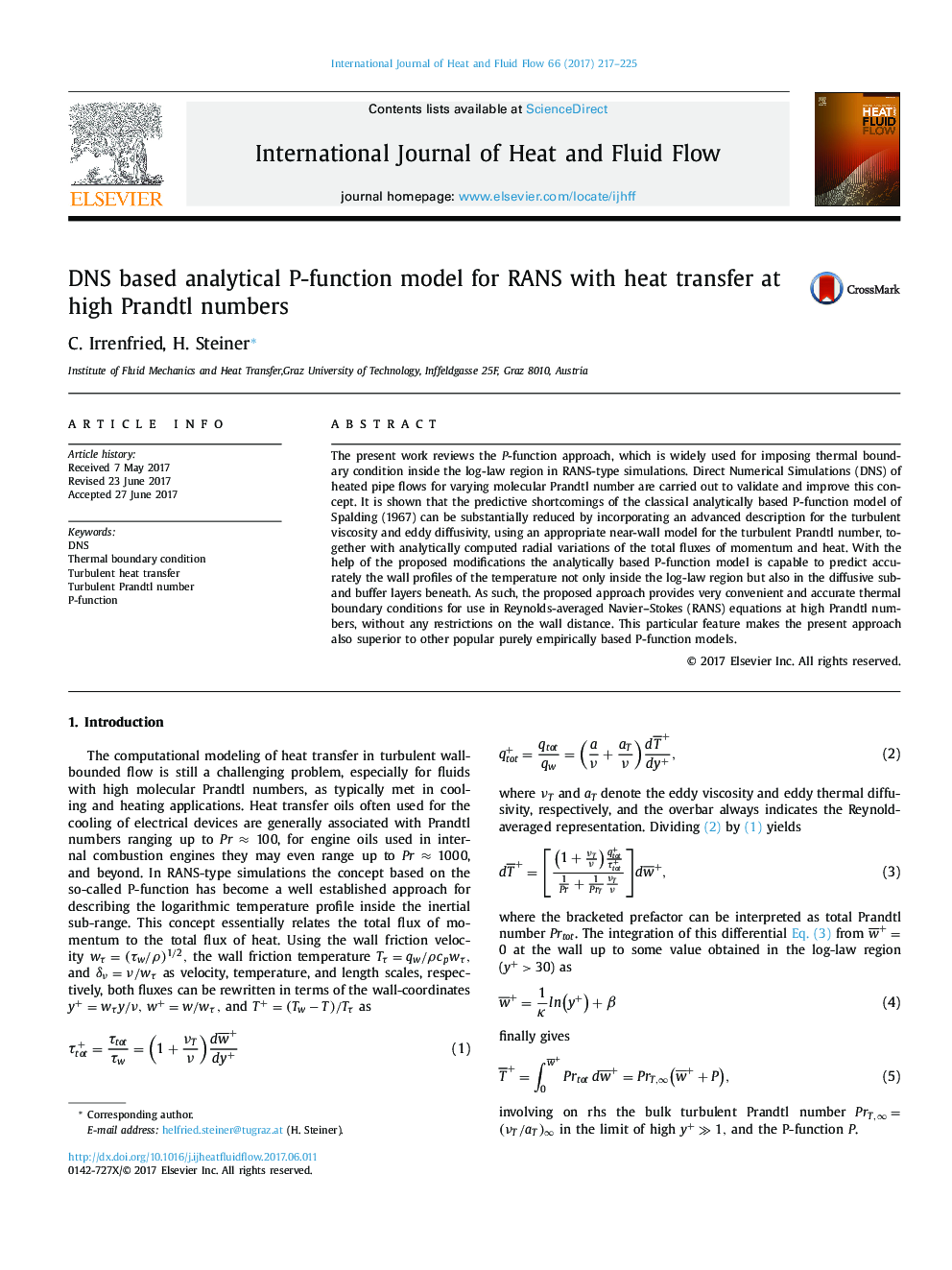| Article ID | Journal | Published Year | Pages | File Type |
|---|---|---|---|---|
| 4993212 | International Journal of Heat and Fluid Flow | 2017 | 9 Pages |
Abstract
The present work reviews the P-function approach, which is widely used for imposing thermal boundary condition inside the log-law region in RANS-type simulations. Direct Numerical Simulations (DNS) of heated pipe flows for varying molecular Prandtl number are carried out to validate and improve this concept. It is shown that the predictive shortcomings of the classical analytically based P-function model of Spalding (1967) can be substantially reduced by incorporating an advanced description for the turbulent viscosity and eddy diffusivity, using an appropriate near-wall model for the turbulent Prandtl number, together with analytically computed radial variations of the total fluxes of momentum and heat. With the help of the proposed modifications the analytically based P-function model is capable to predict accurately the wall profiles of the temperature not only inside the log-law region but also in the diffusive sub- and buffer layers beneath. As such, the proposed approach provides very convenient and accurate thermal boundary conditions for use in Reynolds-averaged Navier-Stokes (RANS) equations at high Prandtl numbers, without any restrictions on the wall distance. This particular feature makes the present approach also superior to other popular purely empirically based P-function models.
Related Topics
Physical Sciences and Engineering
Chemical Engineering
Fluid Flow and Transfer Processes
Authors
C. Irrenfried, H. Steiner,
